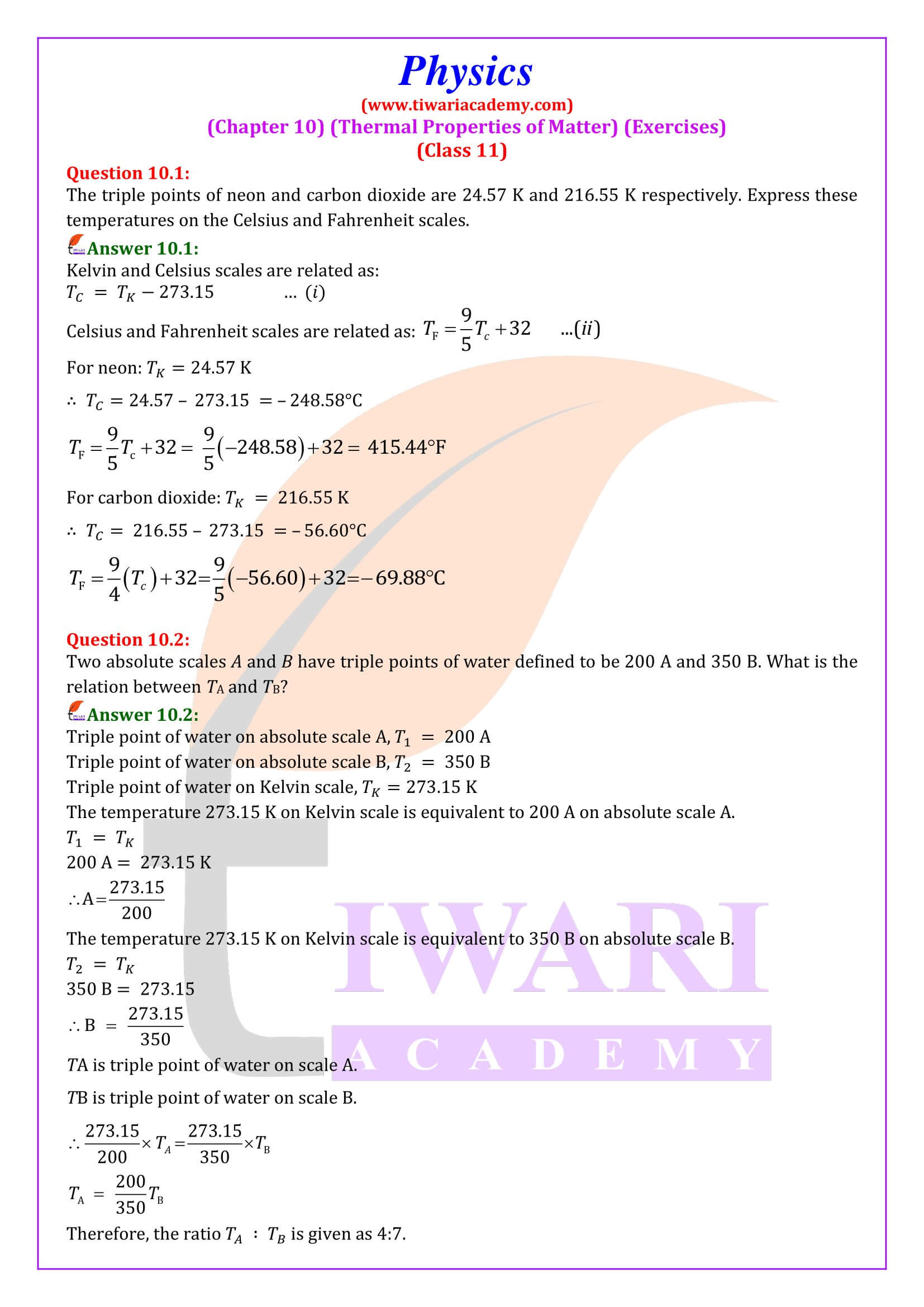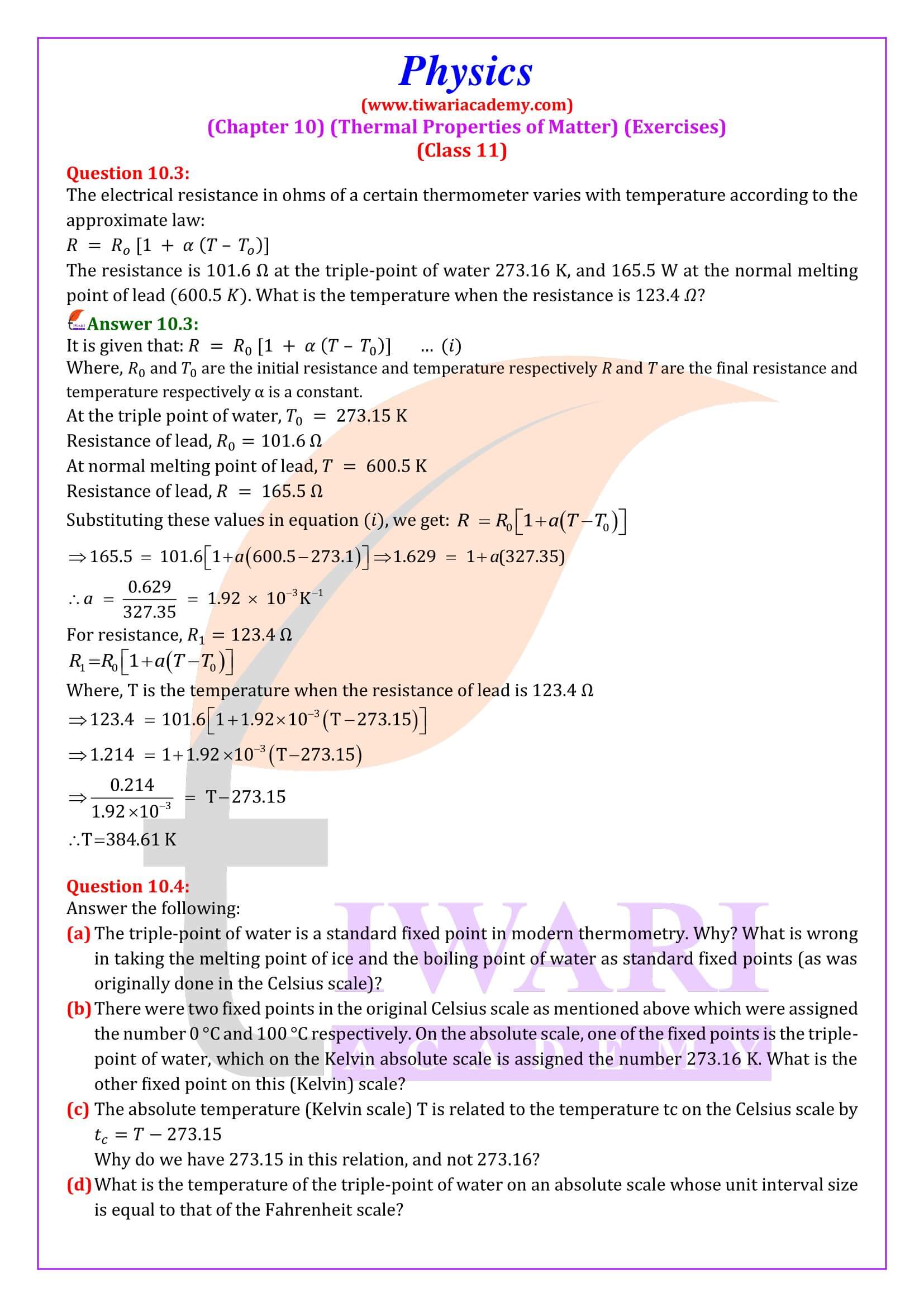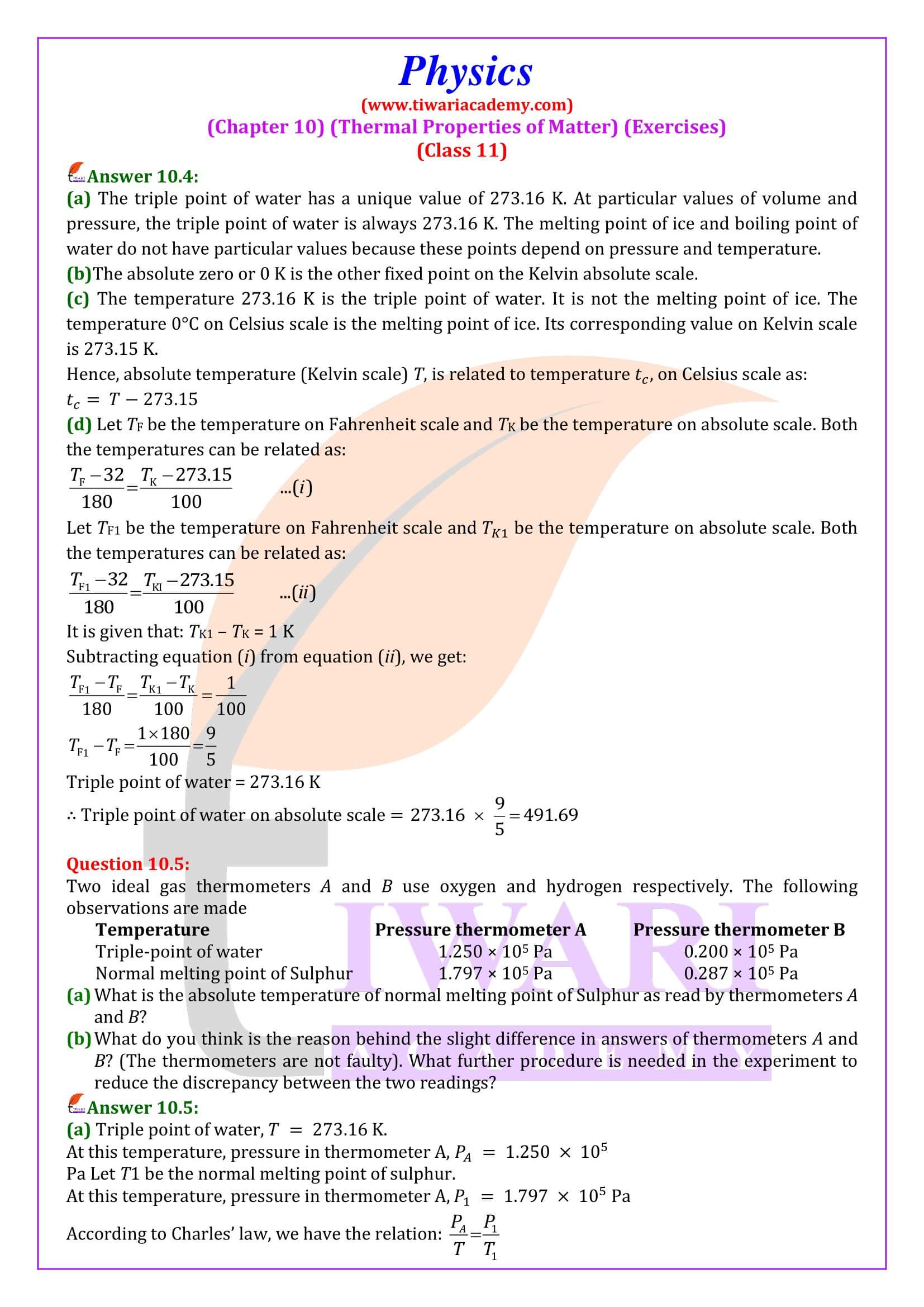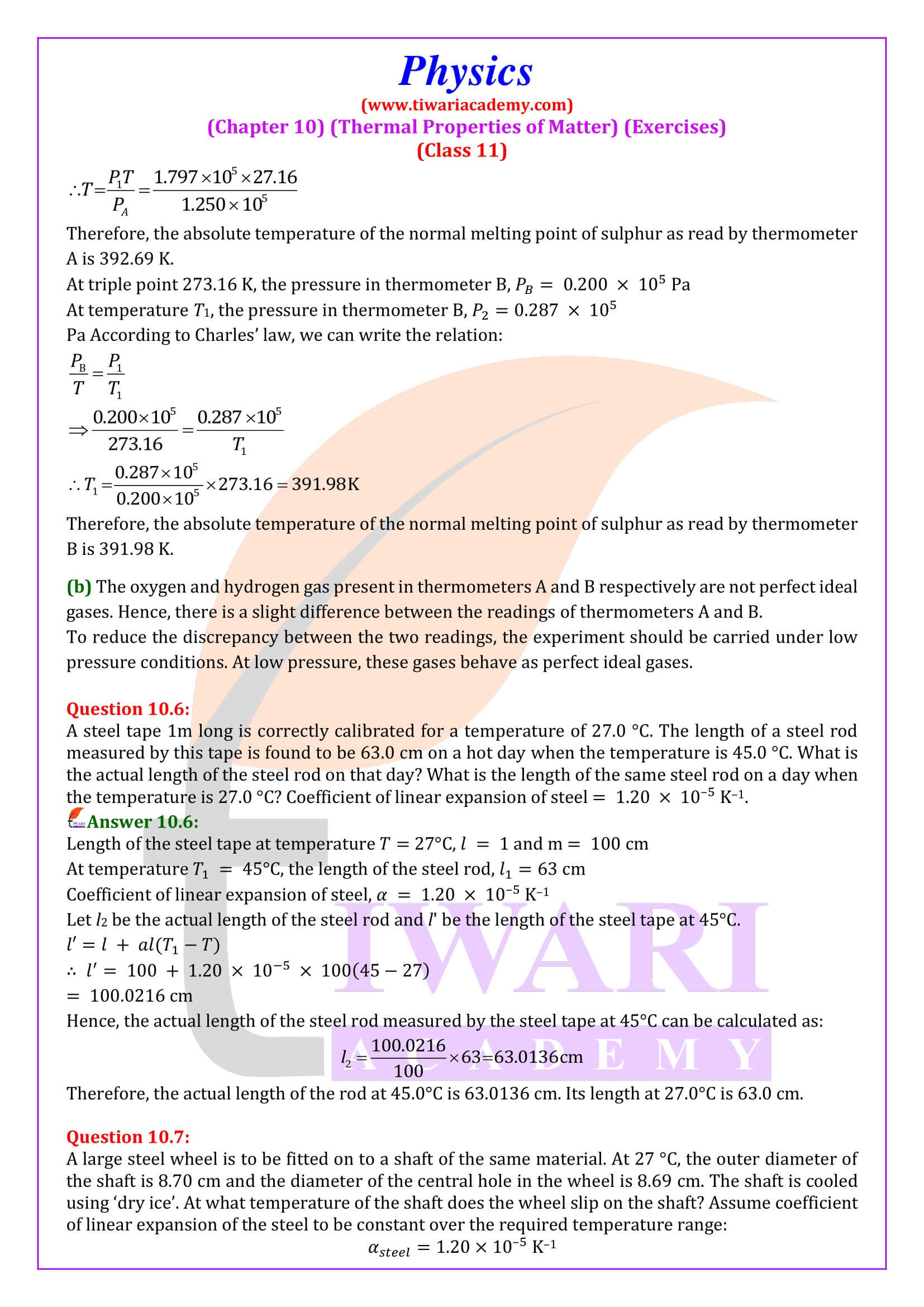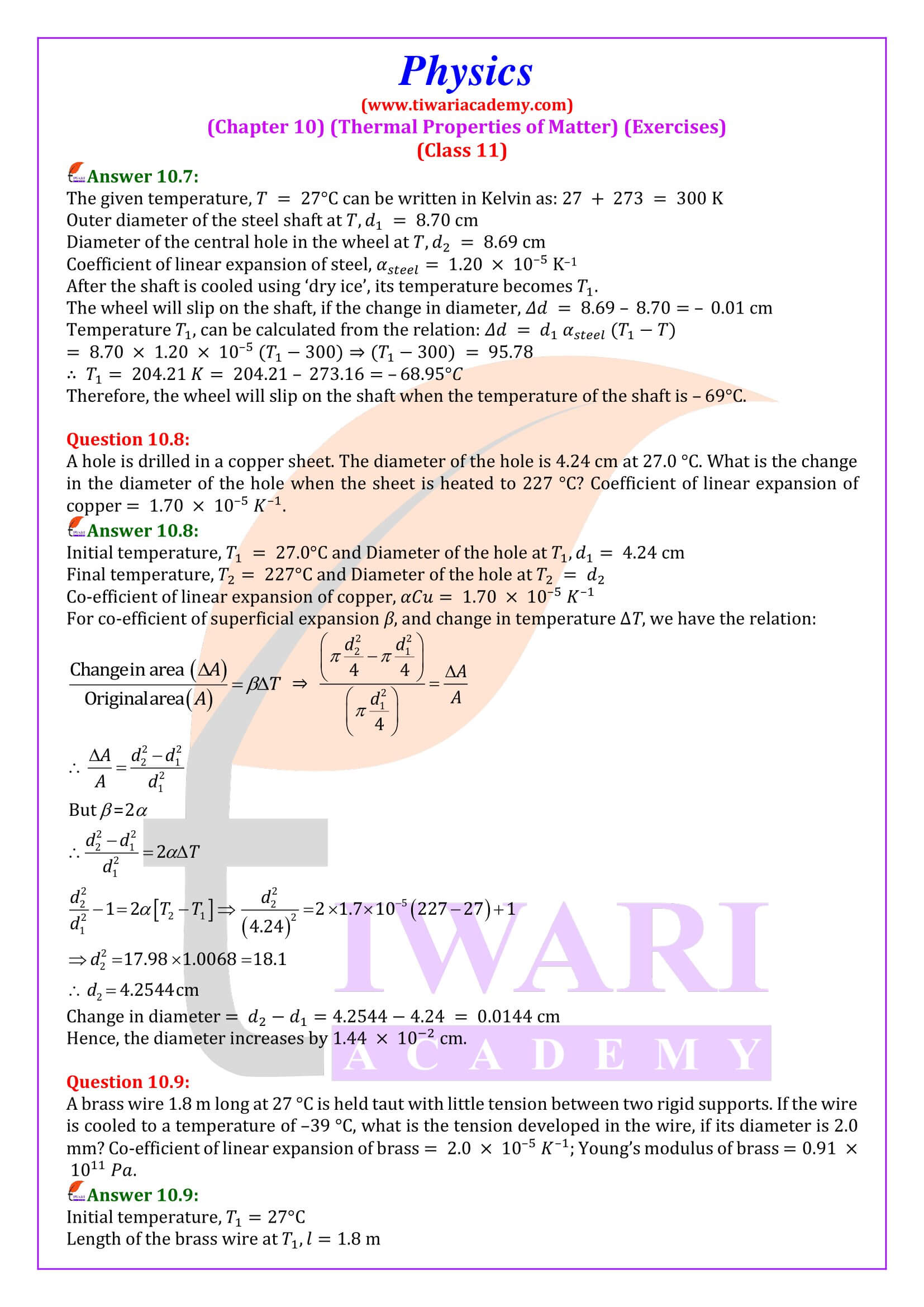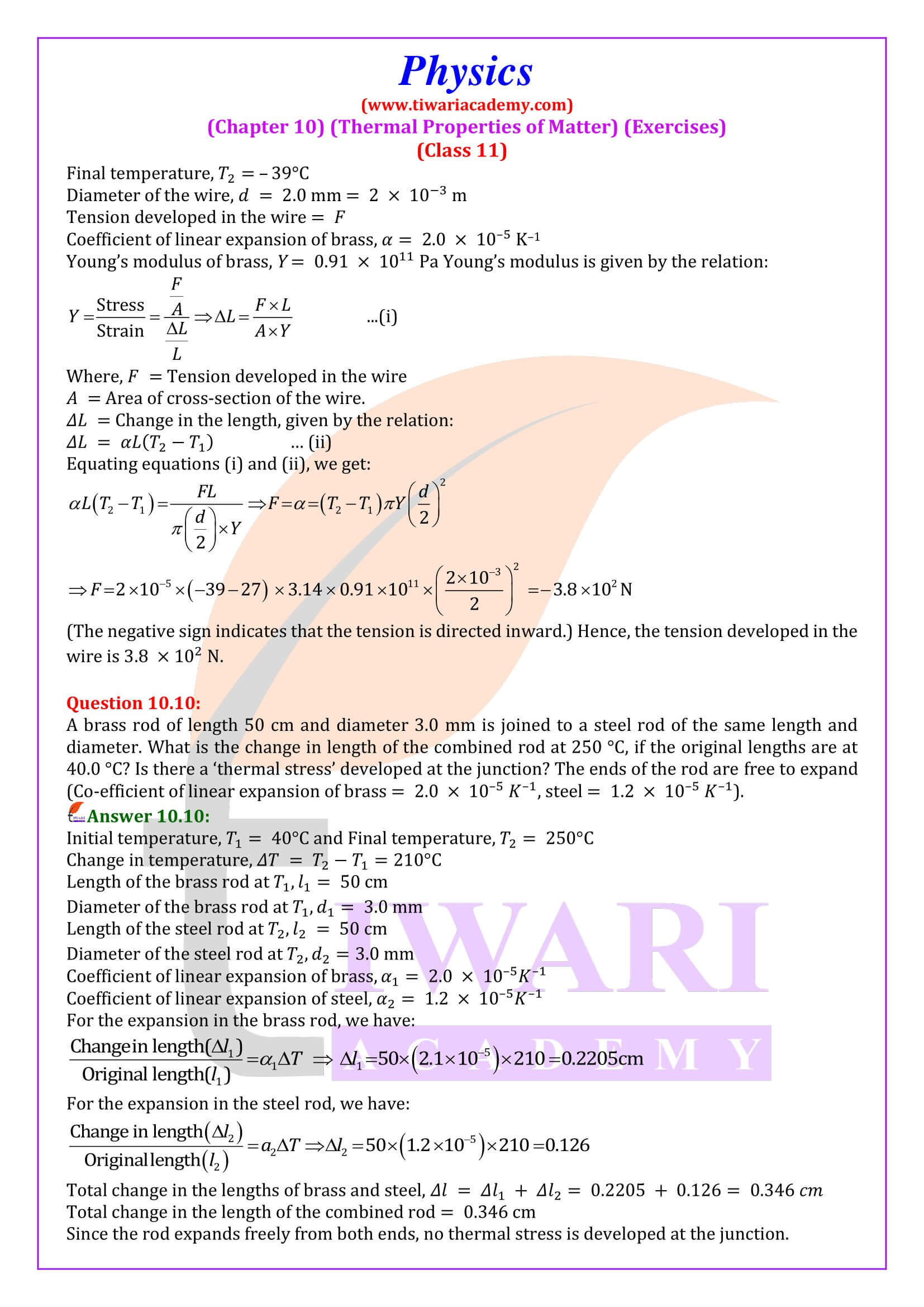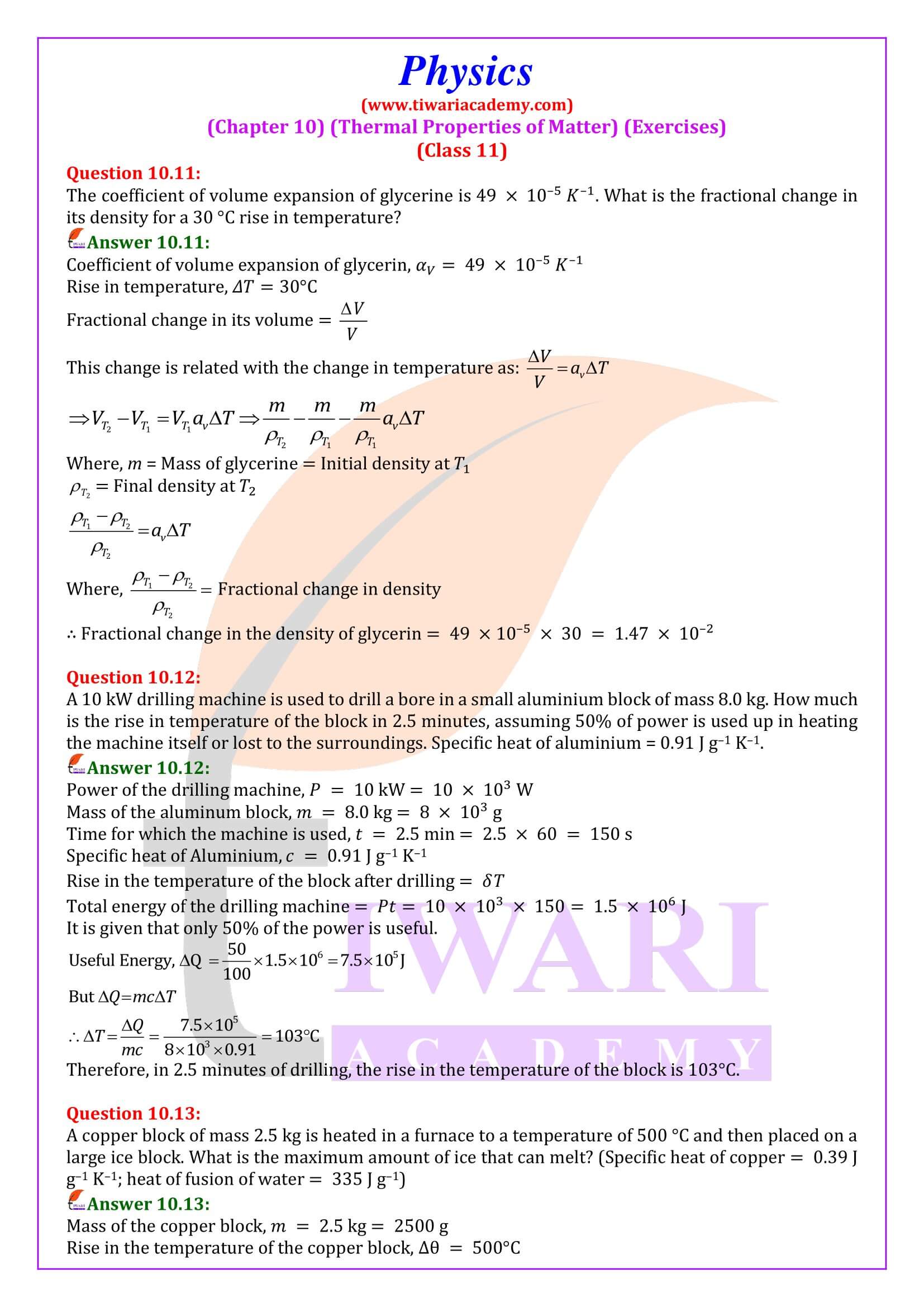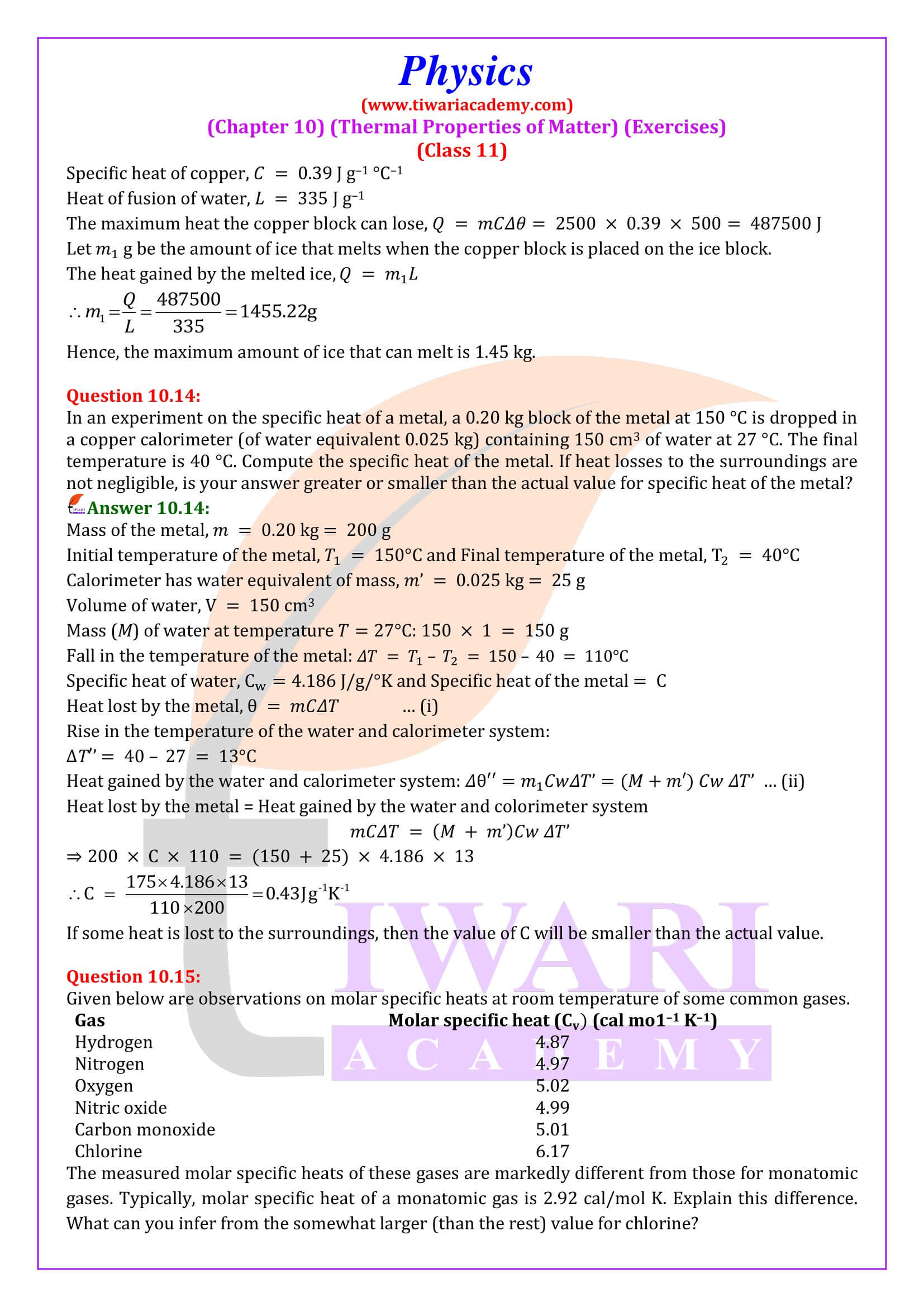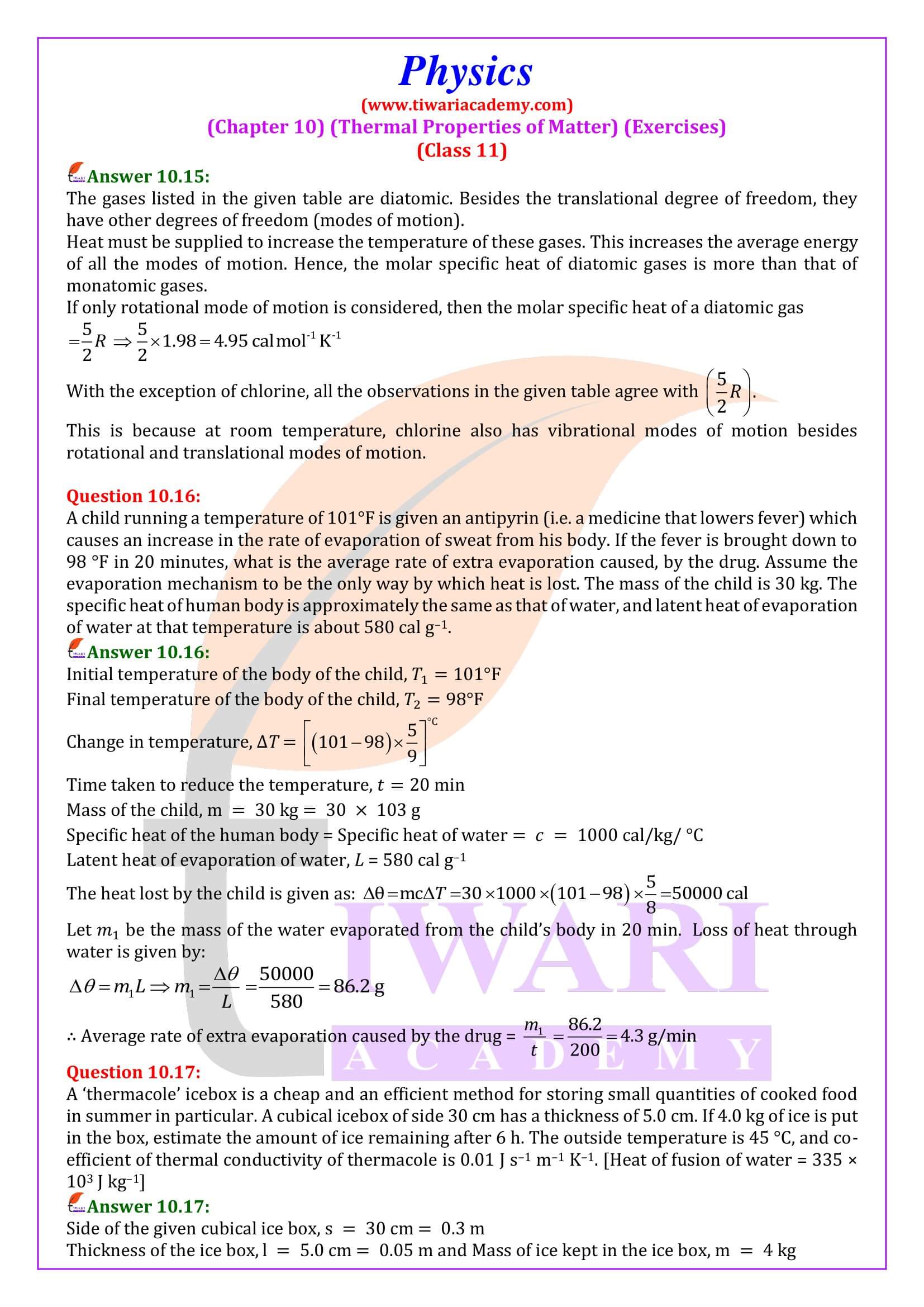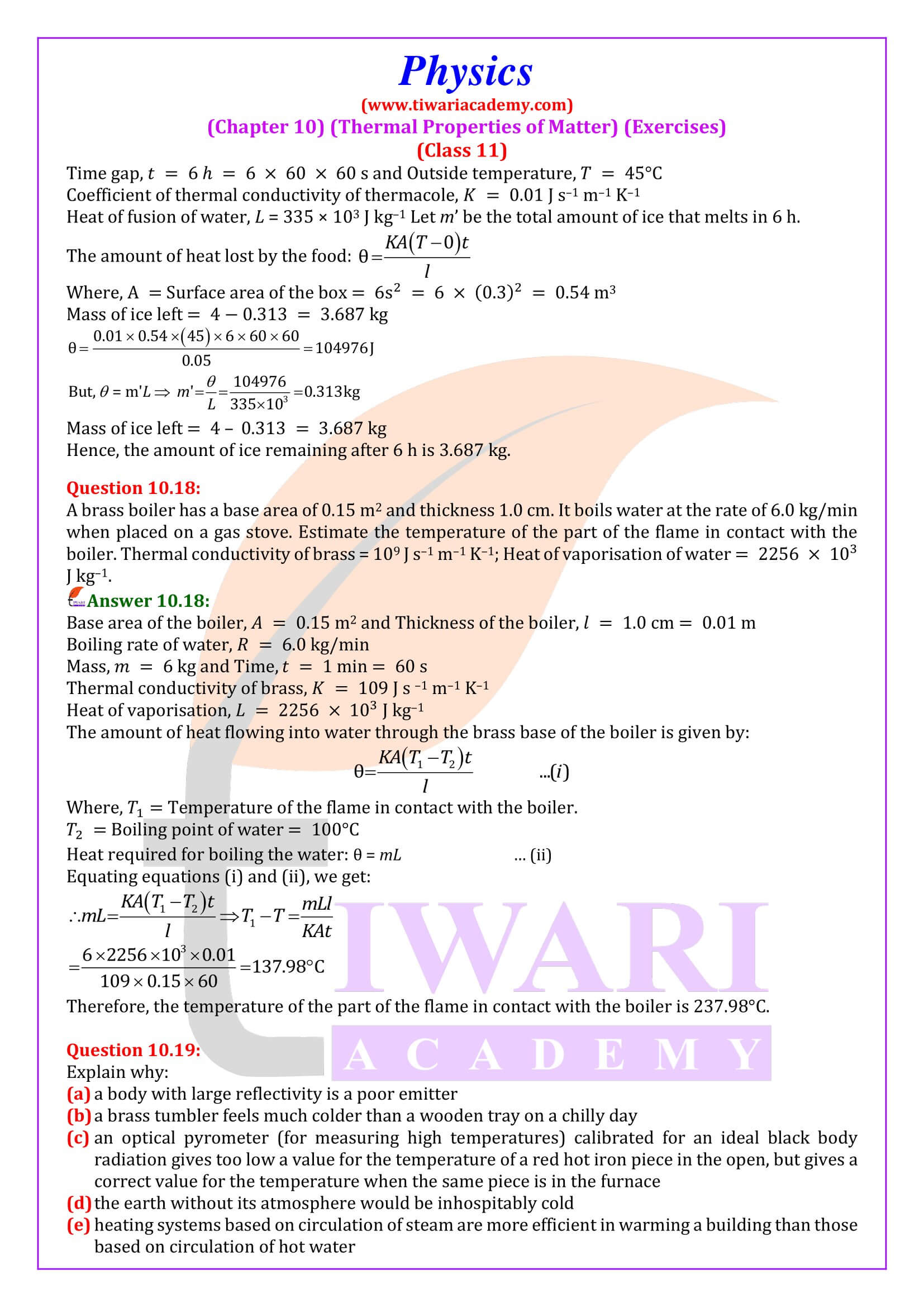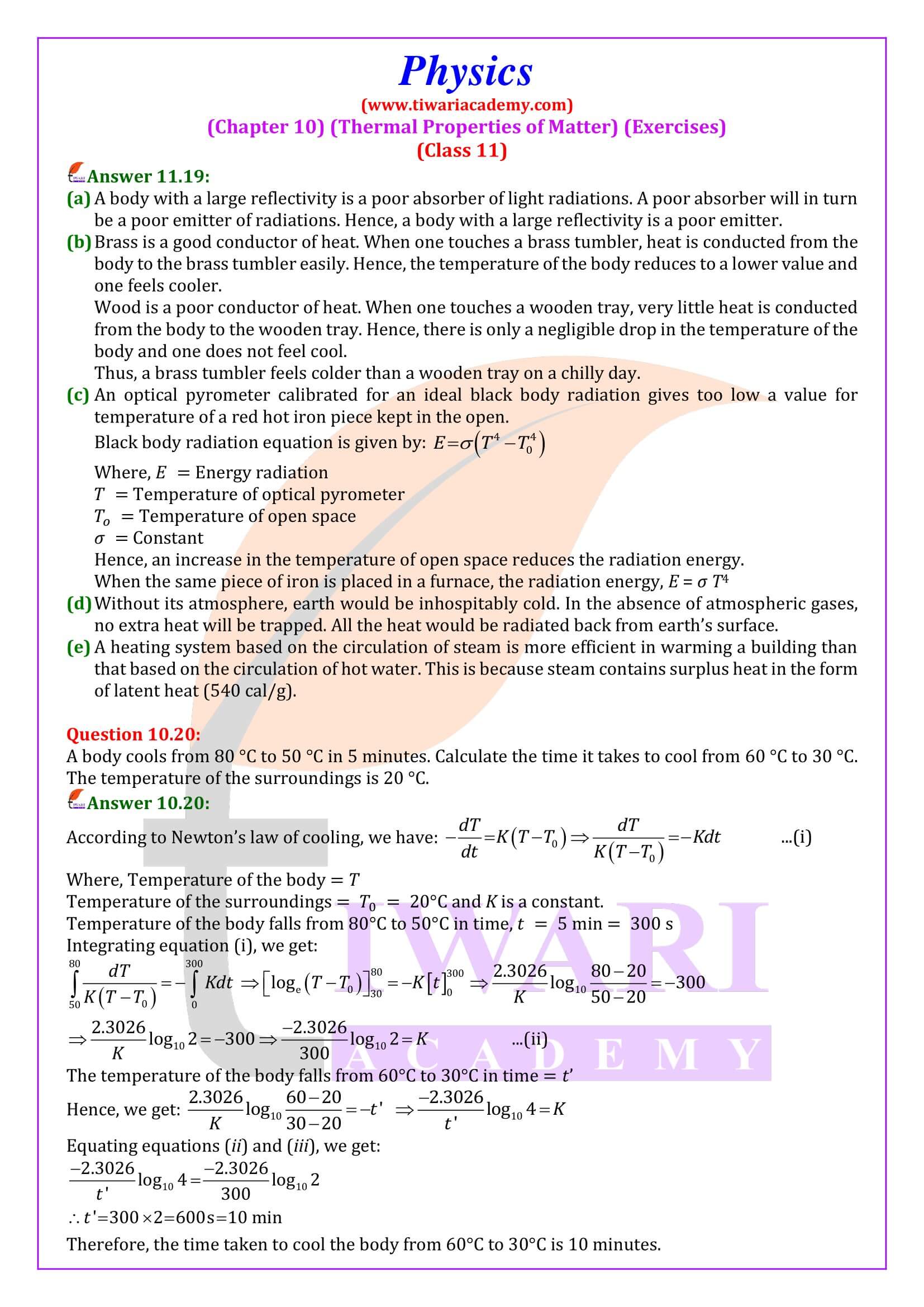NCERT Solutions for Class 11 Physics Chapter 10 Thermal Properties of Matter in Hindi and English Medium exercise and additional exercises for session 2024-25 with MCQ and Extra question answers. Schedule regular revision sessions to revisit the important topics. Review your summary notes, solve problems, and ensure that you retain the concepts over time. If you encounter challenges with any topic, don’t hesitate to seek help from your teachers, tutors, or Tiwari Academy online website and app. Clearing doubts promptly will prevent misunderstandings from accumulating.
Class 11 Physics Chapter 10 Thermal Properties of Matter Question Answers
Class 11 Physics Chapter 10 MCQ
The good absorber of heat is
A surface at temperature to K receives power P by radiation from a small sphere at temperature T0 and at a distance d. if both T and d are doubled, the power received by surface will becomes approximately.
The process of heat transfer in which heat is transferred with actual migration of medium is known as (AFMC -94)
Class 11 Physics Chapter 10 Topic – Thermal Expansion
Regarding liquids, it can be observed that when the thermometer is placed in lukewarm water, the mercury in the thermometer will rise. When we take the thermometer out of this water, the mercury level drops. Similarly, when a balloon is half-inflated in a cool room and placed in warm water, it expands to its full size. Conversely, when a fully inflated balloon is immersed in cold water, it begins to contract due to the contraction of the air inside.
It should be noted that some airtight bottles with metal caps are screwed on so tightly that the cap must be immersed in hot water for a few minutes to open the cap. This expands the metal cap and makes it easier to unscrew the cap. Generally substances get expansion when heated and get contract when the temperature decreased. When the body temperature changes, its size also changes. The term thermal expansion refers to the expansion of an object’s dimensions as temperature increases.
Class 11 Physics Chapter 10 Multiple Choice Questions
The best ideal blackened inside and having a small hole
A person with dark with dark skin as compared to a person with white skin will experience
The good absorber of heat is
For which of the following process, the thermal conduction is maximum?
11th Physics Topic – Latent Heat
The energy or heat released or absorbed by a material during phase shift is called latent heat. It can be gas to liquid, or liquid to solid and vice versa. Enthalpy is a thermal property related to latent heat. However, a key factor to remember about latent heat is that the temperature of the material does not change. As far as the process is concerned, latent heat is the effort required to overcome the attractive forces that hold the molecules and atoms of matter together.
Let’s take an example. If a solid turns into a liquid, it must absorb energy to push the molecules into a larger, more fluid volume. When a material changes from a gas to a liquid, its density level must also change from low to high, causing the material to release or lose energy to bring the molecules together. The formula for latent heat is L= Q /M, where L is the latent heat, Q is the heat given off or absorbed, and M is the mass of the substance.
Newton’s Law of Cooling in Class 11 Physics
Newton was the first to systematically analyze the relationship between the heat loss of an object in a particular enclosure and its temperature. Newton’s cooling law defines the rate at which an object on display changes temperature by radiation, and it is approximately equal to the temperature difference between the object and its surroundings, provided the temperature difference is small. However, keep in mind that the difference here is very small. The famous physicist Sir Isaac Newton invented a formula.
The temperature at which a material loses heat, the heat of the object is transferred to the surrounding medium. As mentioned earlier, the rate of temperature change is related to the temperature difference between an element and its surroundings. According to Newton’s law of cooling, the rate of heat loss from the human body, namely -dQ/dt, is proportional to the temperature difference between the human body and the surrounding medium. This law only works for small temperature differences. In addition, radiant heat loss depends on the composition of the body surface and the extent of the exposed surface.
How many questions are there in NCERT Class 11 Physics Chapter 10 PDF?
There are 10 main questions in chapter 10 of 11th Physics NCERT, all of which deal with different properties of heat and temperature. It begins with an introduction, followed by a more detailed explanation of other concepts. Students can download all exercises and additional exercises question answers given in chapter end. It provides detailed and simple explanations of each topic so that students can grasp the concepts quickly.
What are the important topics of the chapter 10 in Class 11th Physics?
The important topics of class 11 Physics chapter 10 on the thermal properties of matter are stress-strain relationship, buoyancy and Archimedes’ principle. It also includes the law of floating, Bernoulli’s theorem and Torricelli’s law. The overview of black body radiation, thermal expansion, Elasticity module and elastic energy are also given here. After studying the chapter 10 of class 11 Physics, students will able to know about Pascal’s Law, specific heat capacity of an object and Calorimetry.
How important is the chapter 10 of 11th Physics for competitive exams?
The thermal properties of matter are an important chapter in the physics of the NEET, JEE and other competitive exams preparation. Students preparing for medical or engineering, should have a thorough understanding of the concepts given in chapter 10. They can get a lot of board as well as competitive exam questions from this chapter. They can find online NCERT solutions and important questions to prepare for the entrance exam. Tiwari Academy provides all important questions in this chapter to help all aspirants score high in the competitive exams.
